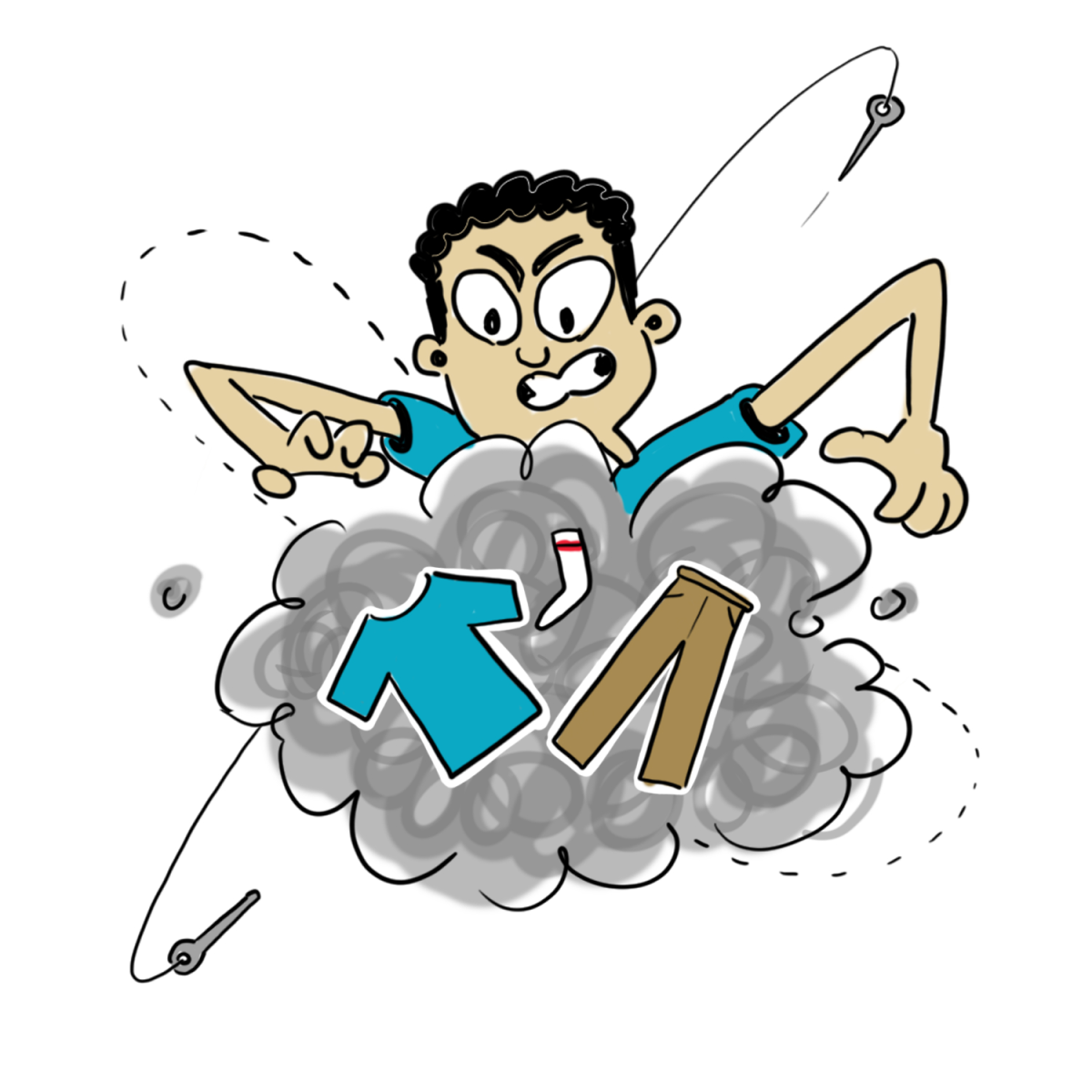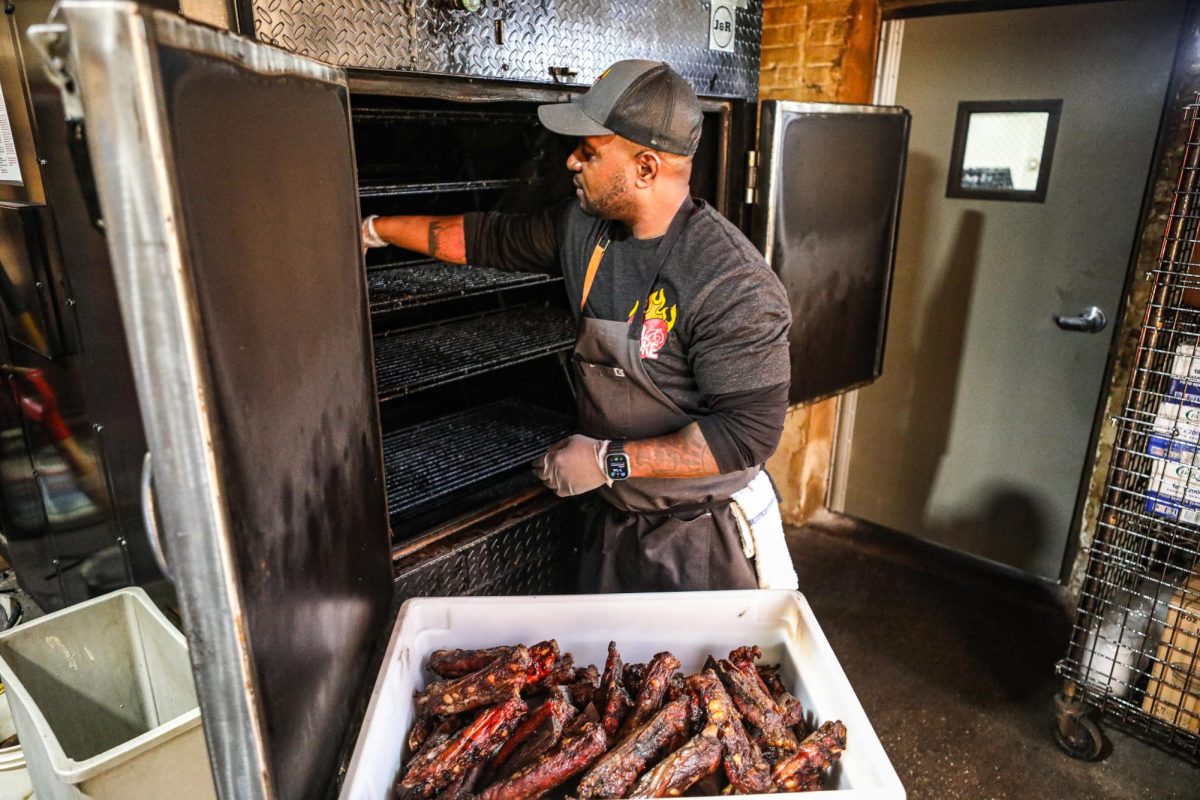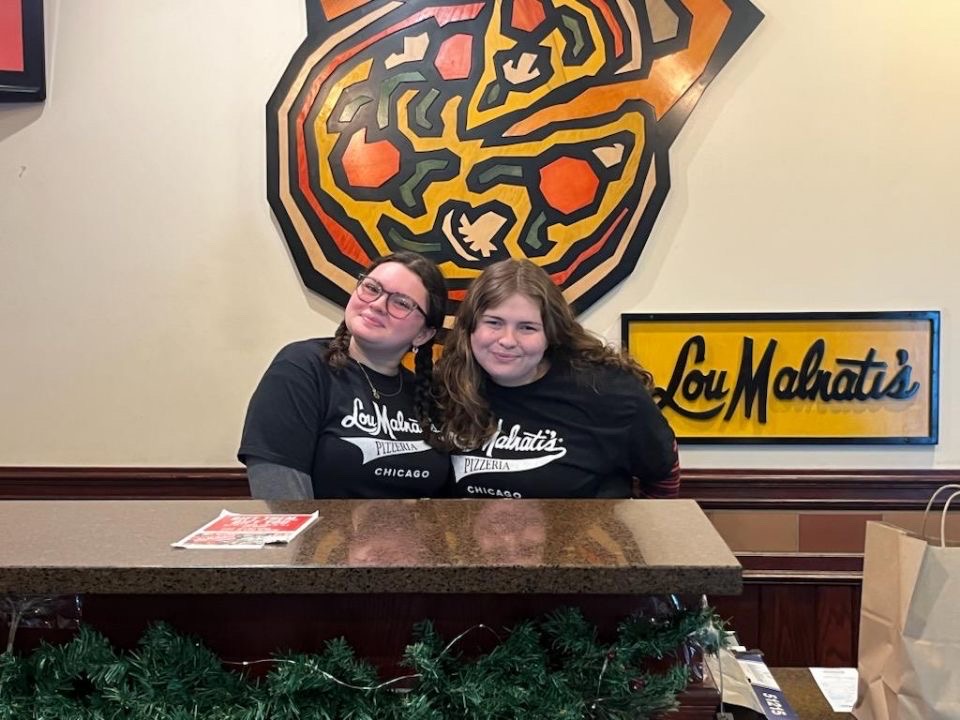An old t-shirt, ribbon, plastic scissors, and a needle and thread come together under the creative expression of an artist to create wearable art. With fast fashion being a heavy contributor to climate and waste issues, creating clothing out of recycled materials is a way for makers to not only convey their creativity, but also to better their sustainability.
There are many ways to easily convert something old and useless into the latest addition to one’s Pinterest board. With her newest sewing inspired Pinterest board, ETHS student Axia Anderson shares her experience with working with old clothes.
“Whenever I deep clean my closet I make sure to look at each article of clothes potential,” Anderson said. “What looks ugly at first could end up being perfect for a specific project I have been wanting to start.”
While Anderson might not immediately be thinking about what else she is helping other than her wallet when creating new clothes, the impact that new clothing has on the environment plays a crucial role in this scenario.
According to theroundup.org, up to 100 billion garments are produced by the fashion industry every year. And each year, as much as 92 million tons of clothing ends up in landfills. Upcycling clothing is a great way to start to lower that crucial impact on the environment.
Another way to make the process of purchasing clothes not only more sustainable but also cheaper and more accessible, is through thrifting. Thrifting is an amazing segway into upcycling clothes, and in the ETHS fashion classroom, fashion teacher Teressa Houston encourages and initiates projects surrounding thrifting.
“We did a whole denim upcycling project this year,” Houston said. “So I bought around 20 pairs of pants from Goodwill.”
Using one of these pairs of jeans, junior Jordan Goldstein was able to create something she was proud of. She explains how she made two slits at the bottom of the outermost side of each leg, and sewed a bow to encase each opening.
“It is so fun seeing what can come out of something that was bought pre-owned,” Goldstein said. “I loved the result, and actually ended up gifting them to a friend who wears them all the time. Gifting something handmade is such a special thing”.
In the fashion classroom, students will often find that the fabric and materials that they are using in class are either donated from outside sources, or thrifted from teachers. Not only is this a means of reducing the school’s carbon footprint, it also serves as a way to get students’ creativity flowing.
Students in the fashion classroom are constantly in innovative situations while working with fabric that has been donated because of the range of different materials. Houston suggests that this is an opportunity to indulge their creativity in the classroom, given that many of these students are planning on going into the fashion industry.
“One of the most important things a student can get from this class is how it is preparing them to go to school for fashion design,” Houston said. “And typically, in my advanced fashion classes, most of them are applying for fashion schools.”
In the advanced fashion class, Houston has her students embark on a creative challenge through Harper College; this challenge is a design competition where students are able to take the provided prompt and patterns from Harper, then use their own creative freedom to alter it however they choose.
“This competition is kind of a combination of from scratch, and thrifting,” Houston said. “There’s a lot of DIY, and since thrifting is so in style, a lot of kids buy something used and use that as the base of their project.”
Houston goes on and explains how this year’s theme for the Harper challenge is “Worn, Torn and Reborn.” Students are not allowed to purchase anything that is new; to plan for this, Houston has bought lots of thrifted supplies, and has taken advantage of previous donations.
Whether students take fashion classes for their own enjoyment or to prepare themselves for their future careers, any student from any level of education on fashion is able to learn new ways to express themselves.
Expressing yourself through clothing takes a lot of creative brain power, especially when it comes to choosing from a very select amount of materials. For example, when junior Jexa Edinberg was around 7 years old, they started creating clothes from simple materials found around the house.
“There are pictures of me in a shirt I made out of a check book when I was probably 7,” Edinberg said. “The first time I wore a piece of clothing I made to school was in 5th grade, but my skills have improved exponentially since then.”
As Edinberg grows older, they continue to build on their craft and love for fashion design. Some of the main motivators for Edinberg is the increase of fast fashion, and the climate change issues that stem from it.
“A big reason I make my own clothing is because of the awful impacts of the fashion industry on the environment,” Edinberg said. “I love mending clothes and giving them new life.”
As an E-town Sunrise—a youth-led climate justice group at ETHS—leader, Edinberg is extremely passionate about making a difference for our world. One of their first steps in the process in crafting new clothing is gathering the materials they need.
Much like how Houston thrifts clothing and uses donated materials in the classroom, Edinberg is also a heavy believer in reusing mediums.
“Because I focus so much on sustainability in my practice, sourcing fabrics that are new feels wrong to me,” Edinberg said. “I want to make a dent on the nearly infinite amount of dead stock and remnant materials that already exist in the world.”
Being aware of the horrors the fast fashion industry is bringing upon the planet, Edinberg knows that this small step of creating their own clothing could seem small at first; however, this practice is hoped to be adopted by those who are inspired by the creative minds like Edinberg, Anderson, Goldstein and fashion class students at ETHS, who use what they already have to create something new.






